Lift Off Time | December 06, 2020 – 16:17 UTC | 11:17 EST Note: if SpaceX scrubs for any reason today and the 8th, the next launch opportunity is not until December 21 due to the beta angle at the ISS. |
|---|---|
Mission Name | CRS-21 |
Launch Provider
| SpaceX |
Customer
| NASA |
Rocket | Falcon 9 Block 5 B1058.4 |
Launch Location | Launch Complex 39A (LC-39A), Kennedy Space Center, Florida, USA |
Payload mass | Around 15,000 kg (33,000 lbs) (~12,000 kg dry mass + cargo) |
Where is the spacecraft going? | Dragon C208 will rendezvous with the International Space Station (ISS) |
Will they be attempting to recover the first stage? | Yes |
Where will the first stage land? | The first stage will land 623 km downrange on Of Course I Still Love You (OCISLY) |
Will they be attempting to recover the fairings? | There are no fairings on the Dragon 2 |
How’s the weather looking? | The weather is currently 60% go. (as of December 5, 2020 – 13:00 UTC) |
This will be the: | – 1st SpaceX launch under the CRS 2 contract – 1st launch of Cargo Dragon 2 – Fastest a booster has reached 4 flights, by far, at 190 days (Previous record: 269) – 1st time two Dragons will be docked to the ISS at once – 2nd to last Cargo Dragon that will stay docked to the ISS for 1 month. (CRS-23 and later will stay docked for 3 months) – 100th successful Falcon 9 launch – 101st Falcon 9 launch – 47th re-flight of a booster – 19th re-flight of a booster in 2020 – 7th 4th flight of a booster – 68th booster landing – 41st landing attempt on Of Course I Still Love You – 18th consecutive landing (SpaceX record: 19) – 24th launch for SpaceX in 2020 – 1st SpaceX launch on December 6 – 28th SpaceX launch from LC-39A – 61 day turnaround of the booster – 102nd orbital launch attempt of 2020 |
Where to watch | Official livestream Tim Dodd, the Everyday Astronaut, will be streaming at T-30 minutes; come ask questions and join the conversation live! |
What’s this all mean?
SpaceX will be launching Cargo Dragon C208 to the International Space Station. CRS-21 will launch on SpaceX’s Falcon 9 Block 5 rocket, which will mark the first SpaceX launch under the CRS 2 contract. The Falcon 9 will lift off from Launch Complex 39A, at the Kennedy Space Center in Florida.
CRS-21 mission
The CRS-21 mission will deliver a number of exciting payloads to the ISS. After launch, the Dragon will perform a number of phasing burns before autonomously docking to the ISS 8-30 hours after launch. Dragon will remain docked to the ISS for approximately 30 days, before deorbiting and softly splashing down in the Atlantic Ocean. After splashdown, Dragon will be recovered either by GO Searcher or GO Navigator.
Payloads
Bishop
Bishop is a commercially funded airlock module for the ISS, built by NanoRacks, Thales Alenia Space, and Boeing. The airlock is relatively small with a mass of 1,059 kg (2,300 lbs) and a pressurized volume of 4 cubic meters, and will be used to deploy cube sats and smallsats. Bishop will be attached to the Tranquility module of the ISS, allowing for the Canadarm 2 to attach it to one of the stations berthing ports.

Hemocue
Hemocue will be used to test white blood cell counting systems, which have been used and validated in 1g, but not 0g.
The Brain Organoid Experiment
This experiment will study how masses of cells organize and grow into the start of a functional brain. Researchers are hoping this experiment will be able to help them better understand cell migration, interaction, division, and death in 0g. Scientists hope that a better understanding of these cellular alterations will allow for a better model of the brain’s formation; this will allow them to more effectively treat neurodegenerative disorders.
BioAsteroid
The University of Edinburgh developed the BioAsteroid experiment which will investigate how gravity affects the interaction between microbes and rock in reduced gravity. BioAsteroid includes two bio-mining reactors, which will allow researchers to research how microbes develop a biofilm on the surface of a rock. This research will be used to develop techniques to mine on other celestial bodies.

Cardinal Heart
The Cardinal Heart experiment was designed with the intent to study how changes in cardiovascular cells and tissues are different in 0g. Cardinal Heart aims to research how long-term 0g exposure affects cardiovascular tissue. Scientists hope studying these differences will allow them to better understand how cardiovascular problems arise on Earth. This study is also hoping to establish ways to predict heart and cardiovascular risk prior to an astronaut launching to space. Cardinal Heart will use engineered heart tissue (EHT), which is essentially a 3D chip of cardiovascular tissue.
SUBSA-BRAINS
This experiment aims to find better methods to braze two alloys to each other in 0g. Researchers hope these methods will be used for repairing the ISS and building human habitats in space.
What’s new on Cargo Dragon 2?
CRS-21 marks the first launch of SpaceX’s upgraded Dragon spacecraft. Cargo Dragon 2 is essentially a Crew Dragon, without an abort system, so it has all of the upgrades from Crew Dragon. Most importantly, Dragon 2 is designed to be reused up to 5 times, with a turnaround time of under 6 months, which is significantly lower than Dragon 1; Dragon 1’s fastest turnaround time was 418 days, with most turnaround times being significantly longer.
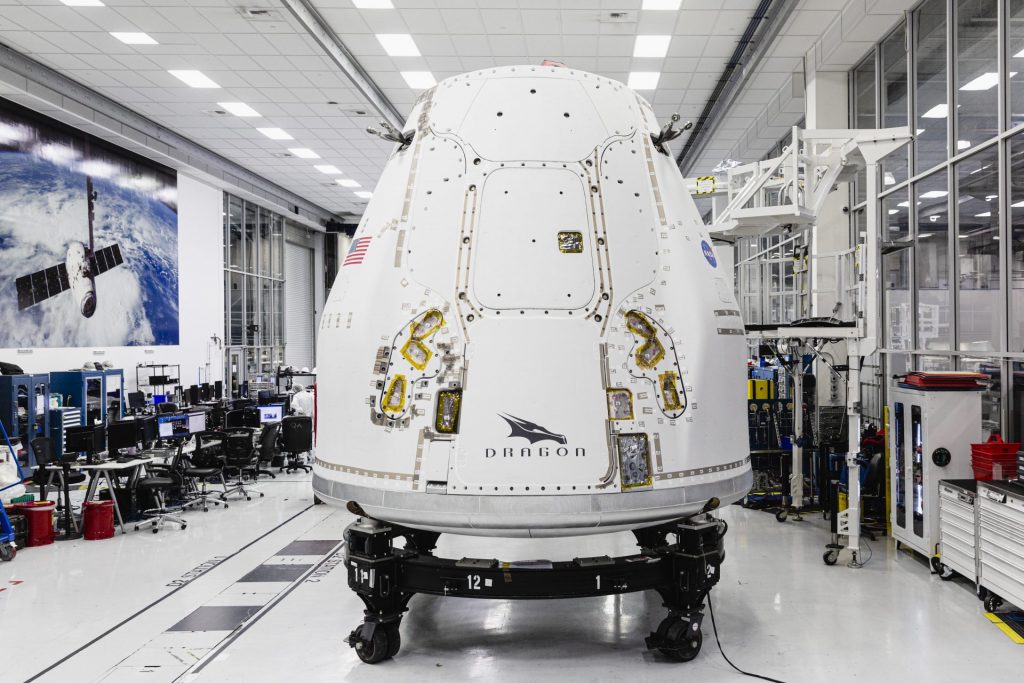
Unlike Dragon 1, Dragon 2 is able to dock with the International Space Station. This means that Dragon 2 autonomously attaches to the ISS, as opposed to berthing, like Dragon 1, where Dragon 1 would hold a position away from the ISS. In this position the Canadarm would capture the spacecraft, attaching it to the ISS. CRS-21 will mark the fourth fully autonomous docking SpaceX has completed (DM-1, DM-2, Crew-1 and CRS-21).
Cargo Dragon 2’s trunk is also different from both Dragon 1’s and Crew Dragon’s. Dragon 2 has its solar panels integrated into its trunk, while Dragon 1 had a deployable solar array from its trunk. However, unlike Crew Dragon, Cargo Dragon 2’s trunk has 2 fins, while Crew Dragon’s has 4.
Cargo Dragon 2 is also significantly more massive, with a dry mass of ~12,000 kg. With this mass increase Dragon 2 is able to carry ~50% more science to the ISS than Dragon 1. Because of this, missions past CRS-22 will sty docked to the ISS for 3 months, rather than the 1 month that they stay docked to now.

Dragon 2’s nosecone is also significantly different as it opens instead of being jettisoned on ascent.
At a press conference after Crew-1, Gwynne Shotwell said SpaceX is expecting to have a fleet of 8 dragons: 5 Crew Dragons and 3 Cargo Dragons. This will allow SpaceX to conduct up to 25 crewed missions and 15 resupply missions.
What is Falcon 9 Block 5?
Falcon 9 Block 5 is SpaceX’s partially reusable two-stage medium-lift launch vehicle. Block 5 is the final iteration of the Falcon 9; the goal is to apply all the lessons learned from 56 previous Falcon 9 pre-Block 5 flights into a human-rated reusable rocket. The Falcon 9 contains 3 main components: a reusable first stage, an expendable second stage, and a reusable fairing or Dragon spacecraft.
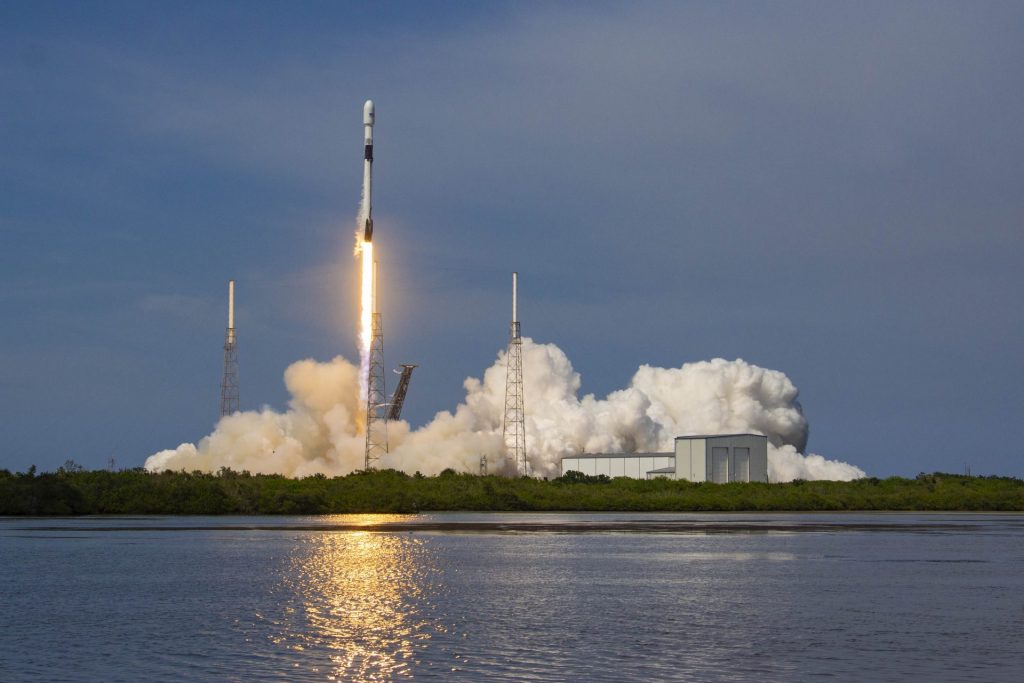
Block 5 Updates:
SpaceX introduced a lot of changes on Block 5, allowing it to become the crew-launching reusable rocket that we know today. To start, the Composite Overwrapped Pressure Vessels (COPVs) had to undergo a complete redesign. NASA mandated the COPV redesign, as it had been the cause of both of the Falcon 9 failures: AMOS-6 and CRS-7.
Along with certification for human spaceflight, Block 5 came with a number of other major changes. To increase the amount of flight each booster could handle, and decrease the turnaround time, SpaceX reinforced the landing legs, upgraded the grid fins, and added a carbon fiber interstage. They also added heat resistant external paint and upgraded the engines. For more information about the changes in Block 5, and the other Blocks of the Falcon 9, check out this video by the Everyday Astronaut:

Falcon 9 B1058
The booster supporting this mission is B1058. This booster has flown three times; its maiden flight was the SpaceX Demonstration Mission 2, which launched on May 30, 2020. The booster’s second flight was on ANASIS-II, which launched on July 20, 2020. The booster’s third flight was on SpaceX’s Starlink V1.0 L12 mission, which launched on October 6, 2020. As CRS-21 is B1058’s fourth flight, its designation will change to B1058.4

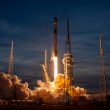
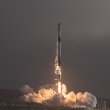

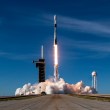

CRS 16, CRS 19 and CRS 21, not 16, 18 and 20.
Oops… that’s my bad. Thanks for the correction
Thank you so much for the neat, to the point article. Just info, I love it:) keep it up!
It looks as though this Dragon variant has been constructed without SuperDraco engines. Can someone confirm if this is true? They still need hypergolics for the attitude thrusters, but they certainly don’t need a full fuel load. I wonder.. have they also installed smaller tanks?
Lancelot, this is true. Because Cargo Dragon 2 isn’t carrying humans, there is non need for an abort system.
This version of Dragon doesn’t have the SuperDraco engines because it doesn’t carry crew. Because of this I don’t believe it would have big hypergolic fuel tanks like Crew Dragon, but I could be wrong.
Random thought: I’ve always been a fan of space exploration. I can still remember watching the moon landing with Neil Armstrong’s steps on the lunar surface. So much has occurred since that historic event. And we cannot forget the beginning of the NASA project and all the early astronauts who risked their lives for mankind. All the scientists, etc. who made this all possible cannot be forgotten. I hope to live to see another visit to the moon and beyond!!! God’s speed!
Does anyone know why they decided to opt for the integrated solar panels on the trunk instead of dynamic rotating ones? Was it plain efficiency or something else?
I think it’s just for simplicity. Don’t need to deploy anything so it will just work. This is of course very important for crewed missions, as humans need energy
Why is this CRS mission not a return to launch site landing?
Because Dragon 2 is heavier than most people think. The payload on CRS missions with Dragon 2 is now too heavy for RTLS landings.
If they have to scrub due to weather do they often try the next day? Driving down (4 hour drive) so hopefully it goes.
Yes. The backup day is almost exactly 24 hours later, with a POGO of 80%
Thanks sir! I guess we will drive down from ft myers leaving at like 4:40am (ugh) and if it is scrubbed we can get a hotel sat night. The last launch I saw was the final shuttle but we were pretty far in Titusville, so I think beach should be nice
I suspect that the new Cargo Dragon 2 could also be used to evacuate astronauts from the ISS in an emergency since it is essentially the same craft as Crew Dragon. I’d be curious to know if there is already a contingency procedure for an emergency evacuation using Cargo Dragon 2 and what that would entail.
I don’t know, but this seems unlikely because seats would have to be installed in Cargo Dragon 2, and I’m betting that they aren’t.
It wouldn’t be because they have Crew Dragon and also don’t forget the multiple Soyuz spacecrafts they have berthed to the station.
Cargo dragon does not have life support
Could anyone point me to a flight path plan for today’s launch – it’s not showing on “heavens above”. Info from the ISS tracker gives me two viewing oportunities tonight, I was thinking I might be able to see Dragon whist it is chasing down the ISS. Thank you.
Is it really needed to state it is a Block 5 anymore as all launched Falcon 9 are just that. More important to state if NOT a Block 5….or, am I right?
Not 47th re-flown booster, 47 different booster have flown more than once.
where can i find out when the first stage booster will return to port Canaveral? I would love to see it return. Thanx!